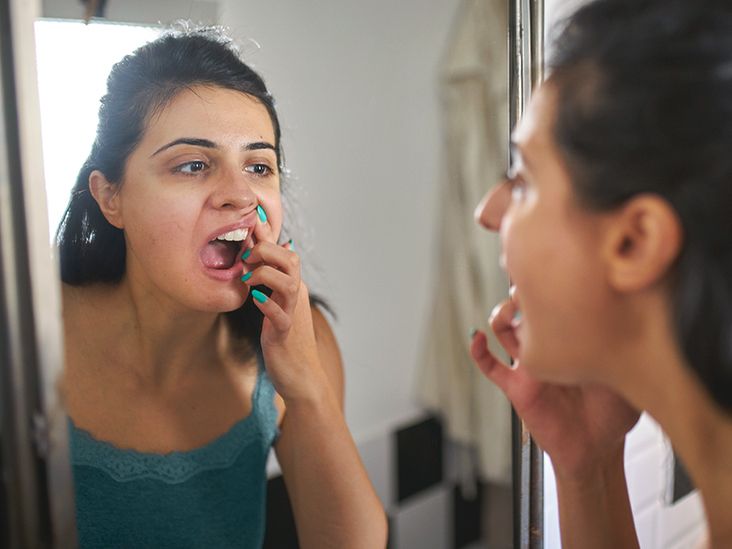Mouth Ulcer Healing Stages: Understanding Canker Sores

Mouth Ulcer Healing Stages: Understanding Canker Sores
Mouth ulcers, commonly known as canker sores, are painful lesions that can develop in various parts of the mouth. Although many canker sores heal naturally without treatment, they may cause discomfort during the healing process. Typically, as mouth ulcers progress through healing, you will notice a gradual fading of the whitish color and surrounding redness, along with a decrease in pain and burning sensations over a period of 1 to 4 weeks.
This article delves into the healing stages of mouth ulcers, highlighting what to expect during recovery.
How Long Does It Take for a Mouth Ulcer to Heal?
Most mouth ulcers generally heal on their own, with the healing timeline varying based on the type:
- Minor (Simple) Canker Sores: Typically smaller than 1 centimeter (0.4 inches), these usually resolve within 1 to 2 weeks.
- Major Canker Sores: These lesions can range from 1 to 3 centimeters (0.4 to 1.2 inches), possibly with irregular borders, and may take up to 4 weeks to heal.
- Herpetiform Canker Sores: These occur as clusters of tiny sores that can merge into a larger lesion, with healing times ranging from 2 to 4 weeks.
How Do Mouth Ulcers Appear During the Healing Process?
Mouth ulcers undergo a series of stages as they heal:
1. Hemostasis
Initially, your body works to minimize blood loss if a mouth ulcer causes bleeding. Hemostasis is the process that takes place during this stage, although canker sores generally don’t bleed unless irritated.
2. Inflammation
Inflammation is a defining characteristic of canker sores. During this phase, you might notice a swollen bump that appears red and sensitive. Often, a white spot emerges within 1 to 3 days, culminating in a round bump surrounded by a red inflamed border.
3. Proliferation
In this stage, new tissue starts forming from the edges of the ulcer, gradually moving towards the center. This is when the surrounding redness begins to diminish, and any sensation of pain or burning typically subsides.
4. Maturation
As healing continues, the ulcer flattens, with the new skin tissue regaining its natural appearance.
Tips for Accelerating Mouth Ulcer Healing
The foods you consume can impact the healing duration of mouth ulcers. To facilitate a quicker recovery, consider avoiding:
- Spicy, salty, and acidic foods.
- Hot or carbonated beverages.
- Mouthwashes with alcohol and toothpaste containing sodium lauryl sulfate.
In addition, the following at-home remedies might enhance your comfort and promote faster healing:
- Over-the-counter pain relief medications to ease discomfort.
- Warm salt-water rinses. Mix 1/2 teaspoon of salt with 1 cup of warm water.
- A combination of equal parts warm water and 3% hydrogen peroxide applied to the sore.
- OTC numbing medications to provide temporary relief.
- Applying magnesium hydroxide (milk of magnesia) directly on the ulcer.
When to Seek Medical Advice
If you experience a painful mouth ulcer that persists beyond 3 weeks or becomes deeper, it’s essential to consult a healthcare professional. They might prescribe specialized medications, either in a rinse, lotion, or pill format, to support healing. Additionally, report recurring canker sores (more than two to three times a year) or any signs of infection, such as:
- Fever
- Pus or drainage from the sore
- Sore throat
- Runny nose
- Swollen lymph nodes
- Fatigue
- Diarrhea
- Headaches
- Skin rashes
Preventing Mouth Ulcers: Practical Tips
While completely avoiding mouth ulcers may not be feasible—especially if they are common in your family—certain preventive measures can help reduce their occurrence:
- Opt for a soft or medium toothbrush to avoid irritation.
- Be gentle when using an electric toothbrush.
- Avoid biting the inside of your cheeks or tongue.
- Manage stress levels, which may trigger ulcers for some individuals.
- Maintain a balanced diet rich in iron, folic acid, and vitamin B12.
Conclusion
Most mouth ulcers, particularly canker sores, are not serious and will typically resolve independently within 1 to 4 weeks. If you notice no improvement in that timeframe, or if you experience additional concerning symptoms, it’s advisable to reach out to a healthcare professional for evaluation and treatment options.
